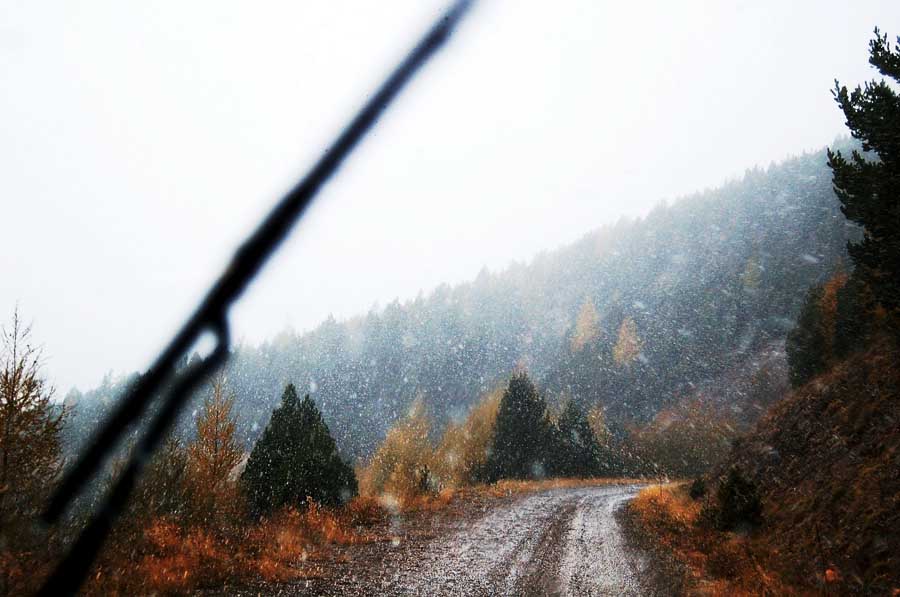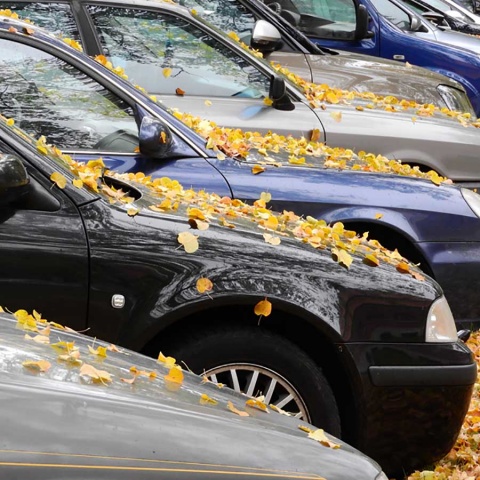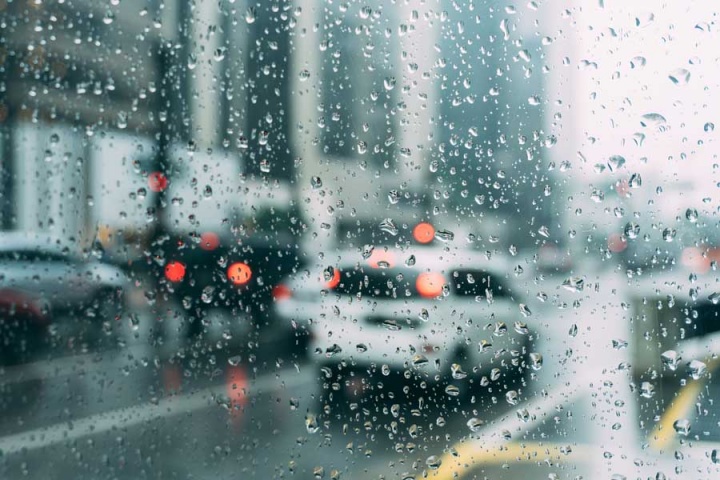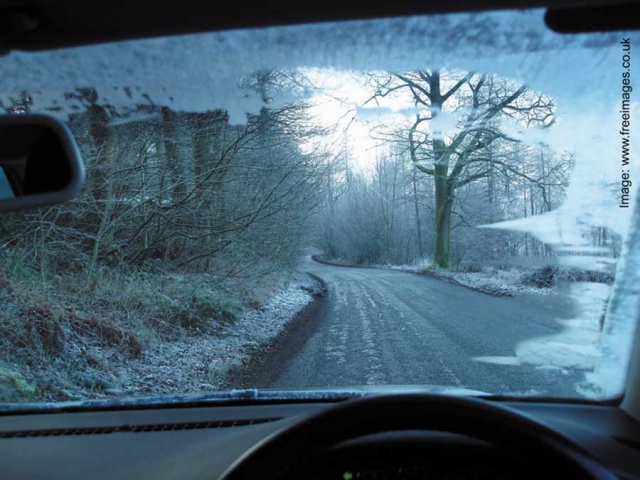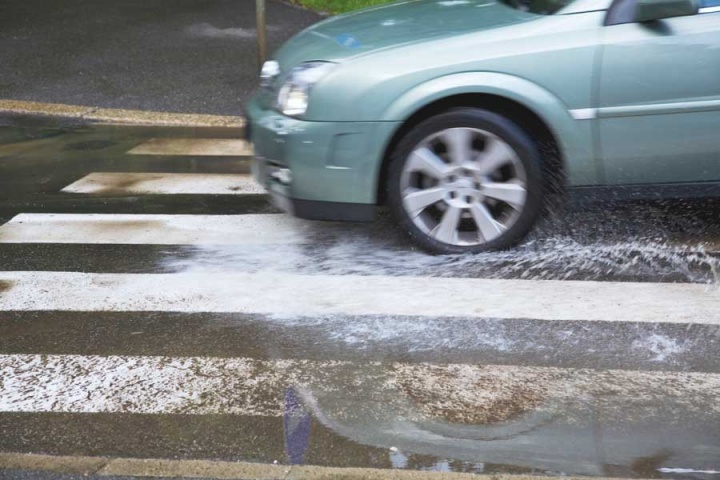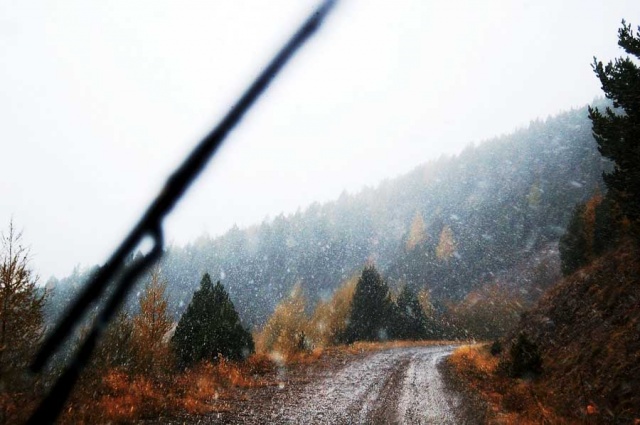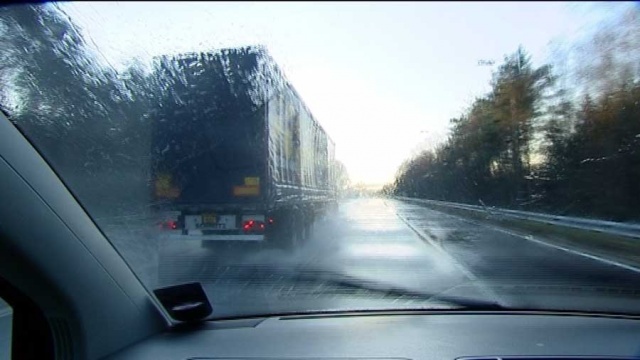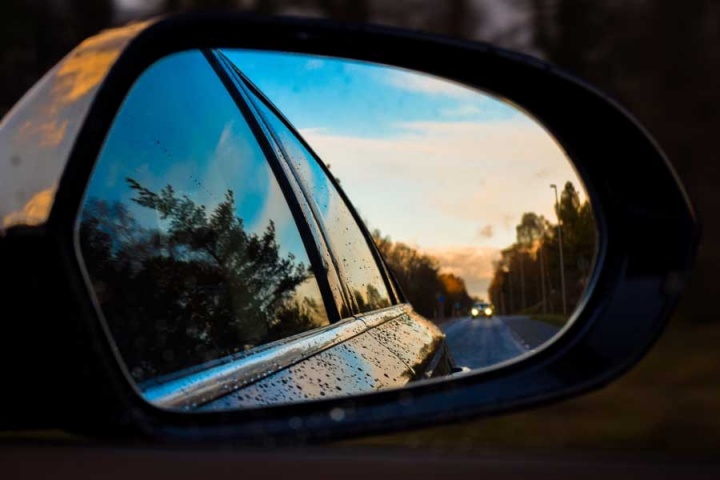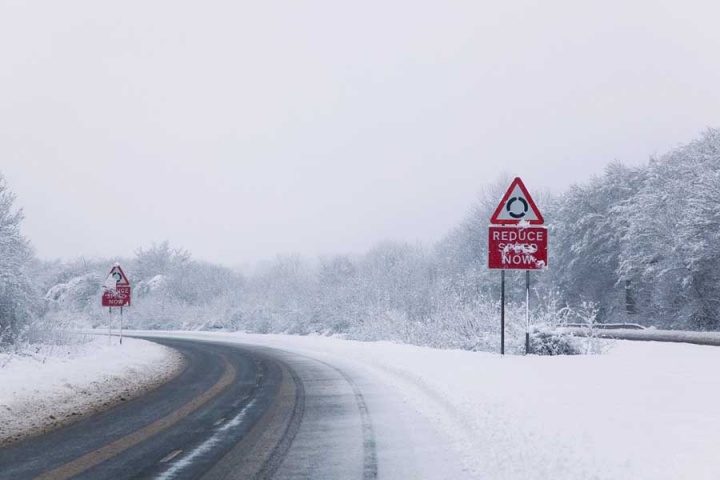Weather. The number one topic of conversation for most in Ireland. It's scorching, it's freezing, it's sunny, it's raining, often during the same day, sometimes during the same hour. On and on it goes, our tiny green island constantly suffering from the Atlantic Ocean's influence. The prolonged dry and warm stretches enjoyed by our continental neighbours are the exception, not the rule. That awful period between the end of autumn and the end of winter tends to be particularly horrid, as the nights draw in and much of the land is covered in a miserable soup of mist and fog.
It's tempting to avoid all this by staying indoors and tucking up with a nice cup of hot brown. Unfortunately, the realities of work and other trivial issues mean that we must brave the elements more regularly than we might like. By proxy, this means that we must get into our cars and drive in a variety of conditions, something that as a nation, we are broadly hopeless at.
"Oh look, another know-it-all journo is up on his high horse, preaching to all and sundry about driving standards". An understandable response. Unfortunately, the accident statistics speak for themselves, and driving on any moderately busy road in inclement weather is a terrifying eye-opener. Stopping distances are forgotten as tailgaters forge blindly ahead into the spray, trusting their tyres (often budget brands, often bald) and anti-lock brakes to keep their steed in control when the inevitable happens and they have to perform some pretty urgent braking. Country roads throw yet another curveball into the mix, muck littering braking zones and apices of corners that would be tricky enough in the dry.
Snow and ice bring their own, unique challenges. Feeling the steering go light and the road noise hush to near silence as your car shimmies over black ice or aquaplanes through standing water is a daunting sensation, and one that we are totally untrained to deal with. Ask yourself, how many times have you needed to reverse around a corner since your formal driving test? And how many times have you felt that your car is out of control, and you are powerless to do anything about it? I'd wager that the latter figure is somewhat higher.
Even when we do get a spell of sunshine, problems arise. Greasy hands frantically wipe windscreens as low evening light spears under sunvisors, piercing retinas and highlighting every spec of dirt on the inside of the glass. Little is more dangerous than a light shower on a tarmac road following days of dusty dryness, and I myself have been caught out by the phenomenon of 'shiny tar'.
What's the solution? The obvious one would be improved driver education, with exposure to all types of conditions and defined examination structures, giving newly-certified drivers the skillsets needed to cope with the immediate effects of a vehicle that's going out of control and rescue the situation. This improved scheme would also feature regular re-tests to ensure competence and standards are maintained to a high level across the board. In addition, the physical workings of a car and how driver inputs can affect those workings would be heavily emphasised, as well as the importance of regular and proper maintenance.
That's the dream. The reality? You or I can fail our driving test, and then drive home. You or I can buy a brand-new car in the morning, and due to the fact that it is not obliged to go through an NCT for four years, theoretically choose not to spend a single cent on maintenance or tyres during that period. The logic behind this defies belief, and suddenly the statistics make sense. Therefore, it's up to you and I to ensure that we can deal with what the skies and the roads throw at us, and there's only one way to do that. Experience.
The next time there's heavy rain forecast, go out and drive in it. The next time there's snow and ice forecast, go out and drive in it. Drive for as long as you can, as slowly and as carefully as you can, and concentrate. The human brain is an incredible thing, with a huge inherent capacity for learning. Every metre covered adds knowledge to an internal database without us even realising, and it's only by doing and doing and doing over and over again that we can truly improve.
Some of it might not be pleasant. Hell, I abhor driving at night in the rain, especially on unfamiliar roads. Conversely, driving at night in the dry is one of my favourite things. Driving at sunrise can be magical but dangerous, as small animals and birds litter the roads, their tired brains not yet able to process the impending arrival of your vehicle. Two of my fondest-ever driving memories include sub-optimal weather; one, passing through a forest in the middle of a dusk thunderstorm, the road temperature high after a day of beating sun and sending wisps of mist evaporating up from a sudden shower of rain, as flashes of pink lightning lit up the trees for what seemed like seconds at a time; and two, sliding around from lock to lock during the long, icy winter of 2010, learning as much as I could about low-grip driving, the speeds so low that the odd grazed ditch resulted in no damage.
The more you do something, the better you become at it. That fact is unavoidable. Ensuring your equipment is up to scratch is a necessity, too. Tyres, tyres, tyres. Nothing is more critical to the handling of a car than those four black circles. Buy good ones, and look after them properly. Then go out, get the experience, and put it into practice. It's up to every single one of us to make the roads safe for ourselves and everyone else, no matter what the weather.

